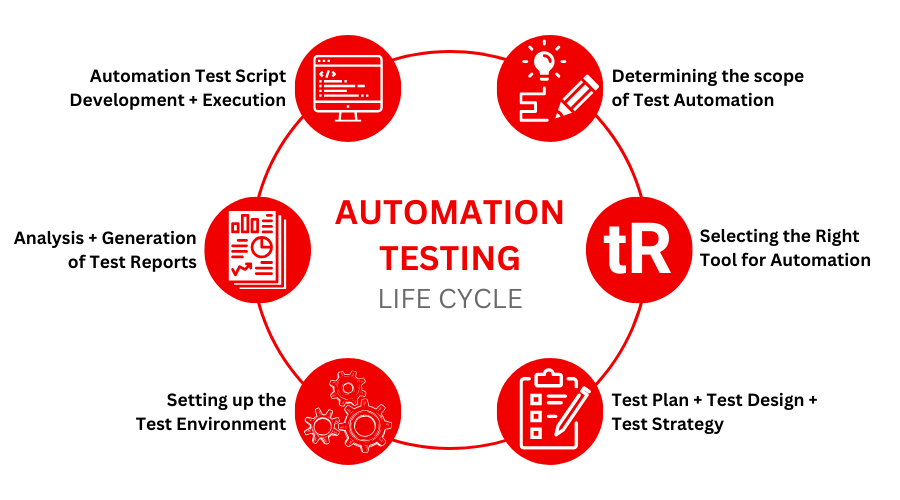Automation Testing Approaches: Finest Practices for Seamless Integration
Automation Testing Approaches: Finest Practices for Seamless Integration
Blog Article
From Handbook to Automated Testing: A Comprehensive Guide to Transitioning Efficiently and Properly
In the realm of software program screening, the shift from handbook to automated procedures has actually ended up being an increasingly important change for companies looking for to boost effectiveness and accuracy in their testing practices. The trip from guidebook to automated screening is not without its challenges, but when come close to tactically and with a clear strategy in mind, the advantages can be significant.
Advantages of Automated Testing
Automated screening provides various advantages, enhancing performance and accuracy in software development procedures. One primary benefit is the significant decrease in screening time. Automated tests can be run simultaneously on several tools and operating systems, substantially speeding up the testing phase compared to hands-on testing. This raised efficiency permits for faster feedback on the quality of the software application, making it possible for programmers to recognize and address concerns promptly.
In addition, automated testing makes certain a greater level of precision in detecting problems. Considering that automated examinations comply with predefined manuscripts, human error is decreased, bring about even more trustworthy test outcomes. Consistency in screening is also improved, as automated examinations execute the exact same steps precisely each time they are run. This uniformity is important in making sure that all performances of the software program are completely tested, lowering the chance of unseen bugs sliding through to manufacturing.
Selecting the Right Devices

First of all, examine your goals and needs. Comprehend the range of your task, the modern technologies included, and the ability of your team. This evaluation will help you figure out the capacities and attributes you call for in your testing tools.
Secondly, think about the compatibility of the devices with your existing systems and procedures. Seamless integration with your current software application advancement lifecycle is vital to guarantee a smooth change to automation.
Furthermore, examine the scalability and flexibility of the tools. As your screening needs advance, the devices must be able to adapt and accommodate adjustments efficiently.
Last but not least, consider the support and area around the tools. Durable assistance and an active customer neighborhood can offer important sources and support when applying automated screening. By thoroughly thinking about these elements, you can select the right devices that straighten with your demands and established the stage for an effective transition to automated screening.
Composing Effective Examination Manuscripts

When crafting examination manuscripts, it is important to take into consideration the specific needs of the software application being tested and make certain that the scripts deal with all critical capabilities. Clear and detailed calling conventions for examination manuscripts and examination cases can improve readability and maintainability. In addition, including mistake handling systems within the examination manuscripts can aid in determining and resolving problems quickly.
Furthermore, arranging test manuscripts right into modular components can enhance reusability and scalability, lowering redundancy and boosting performance in test manuscript maintenance. Routine testimonials and updates to evaluate manuscripts are vital to equal advancing software application needs and capabilities. By adhering to these principles, testers can create durable and efficient test manuscripts that add significantly to the success of automated screening processes.
Integrating Automation Into Workflows
By effortlessly incorporating automated testing devices like Selenium or Appium right into the software application advancement lifecycle, teams can achieve faster responses on code adjustments, leading to quicker insect detection and resolution. This combination allows for constant screening throughout the growth process, guaranteeing that any type of concerns are recognized early on, resulting in greater software program top quality. Correct integration of automation tools needs collaboration in between growth, testing, and procedures teams to develop a unified process that enhances performance and performance in delivering top notch software products.
Making Sure a Smooth Transition
Efficiently transitioning to automated testing includes precise preparation and cautious execution to take full advantage of and decrease interruptions efficiency in the software program advancement process - automation testing. To guarantee a smooth change, it is necessary to begin by conducting an extensive analysis of the existing testing procedures and determining locations where automation can bring one of the most significant benefits. Engaging with all stakeholders beforehand while doing so, including programmers, testers, and project managers, is crucial for garnering assistance and buy-in for the automation campaign
Interaction is vital throughout this transition stage. Clear communication of the objectives, benefits, and assumptions of automated testing helps to handle any resistance or concerns that might occur. Furthermore, supplying appropriate training and resources for staff member to upskill in automation tools and techniques is vital for guaranteeing a successful shift.

Conclusion
In verdict, transitioning from manual to automated testing offers numerous benefits, consisting of raised effectiveness and reliability. By picking the suitable devices, composing efficient test scripts, and integrating automation effortlessly into process, companies can ensure a successful and smooth change. It is necessary to embrace automation as a beneficial asset in software screening procedures to boost overall high quality and efficiency.
In the realm of software testing, the change from handbook to automated procedures has become a significantly vital shift for companies looking for to improve performance and precision in their testing techniques. Automated examinations can be run simultaneously on several devices and running systems, substantially speeding up the screening phase contrasted to hand-operated testing. Consistency in screening is likewise boosted, as automated examinations carry out the exact same steps exactly each time they are run.To ensure the successful implementation of chosen testing my link devices, the production of efficient examination manuscripts plays an essential duty in verifying the functionality and efficiency of automated procedures - automation testing. By following these concepts, testers can develop efficient and robust examination scripts that contribute significantly to the success of automated testing procedures
Report this page